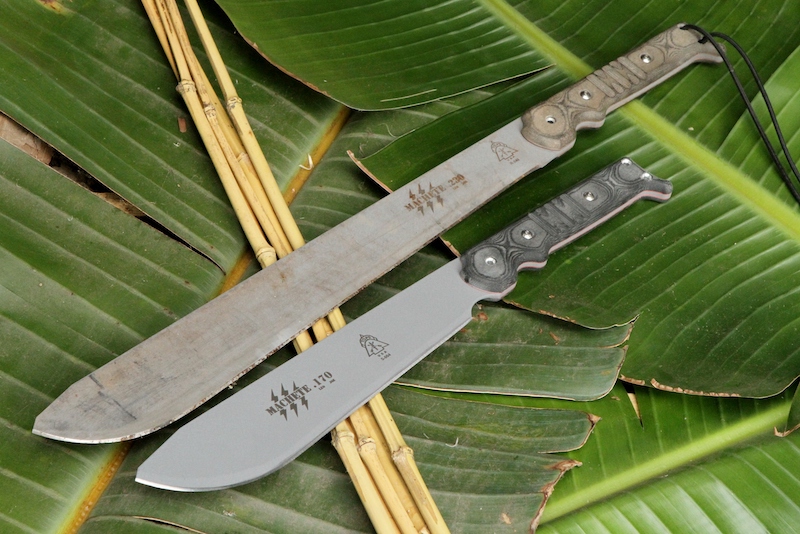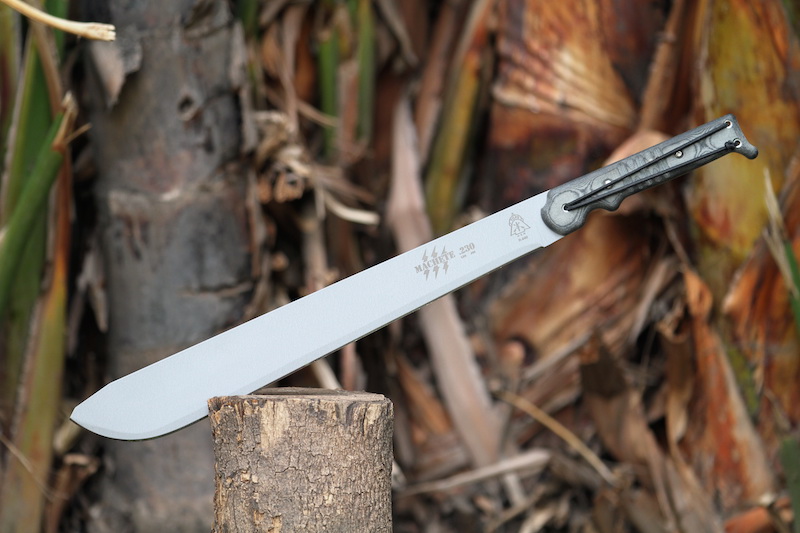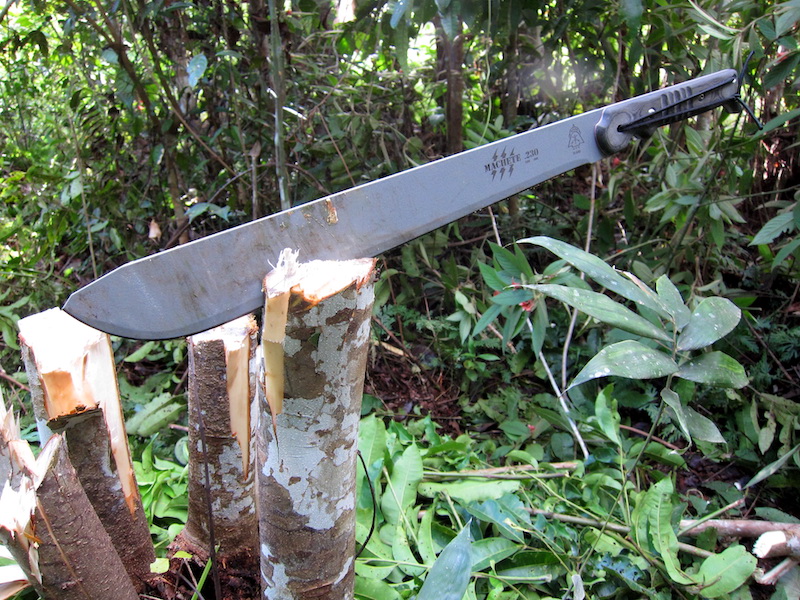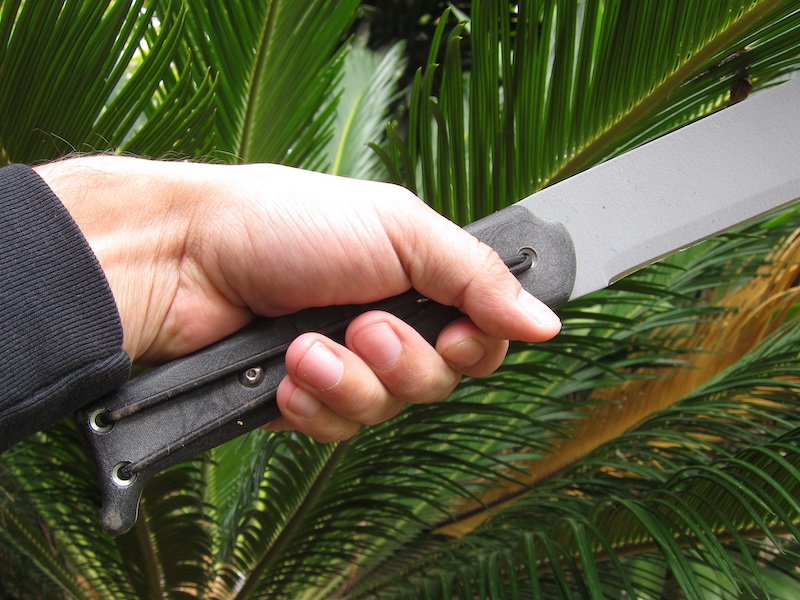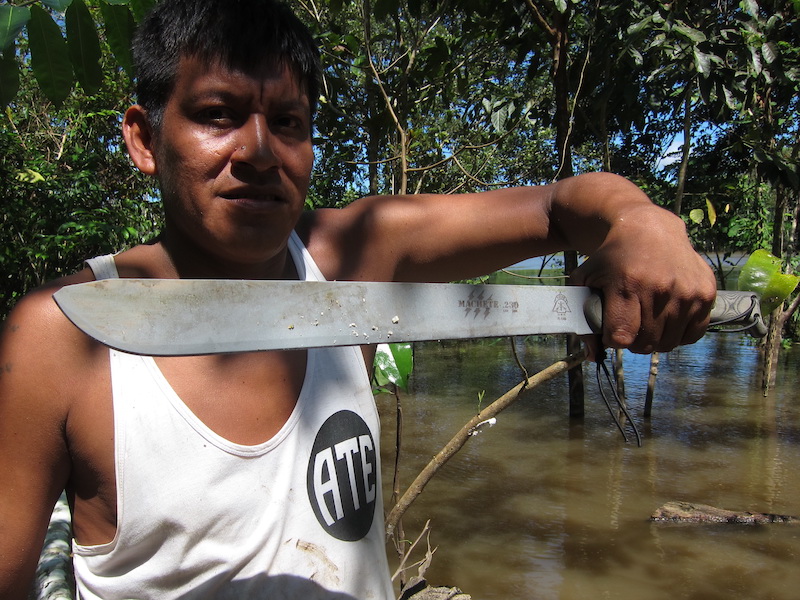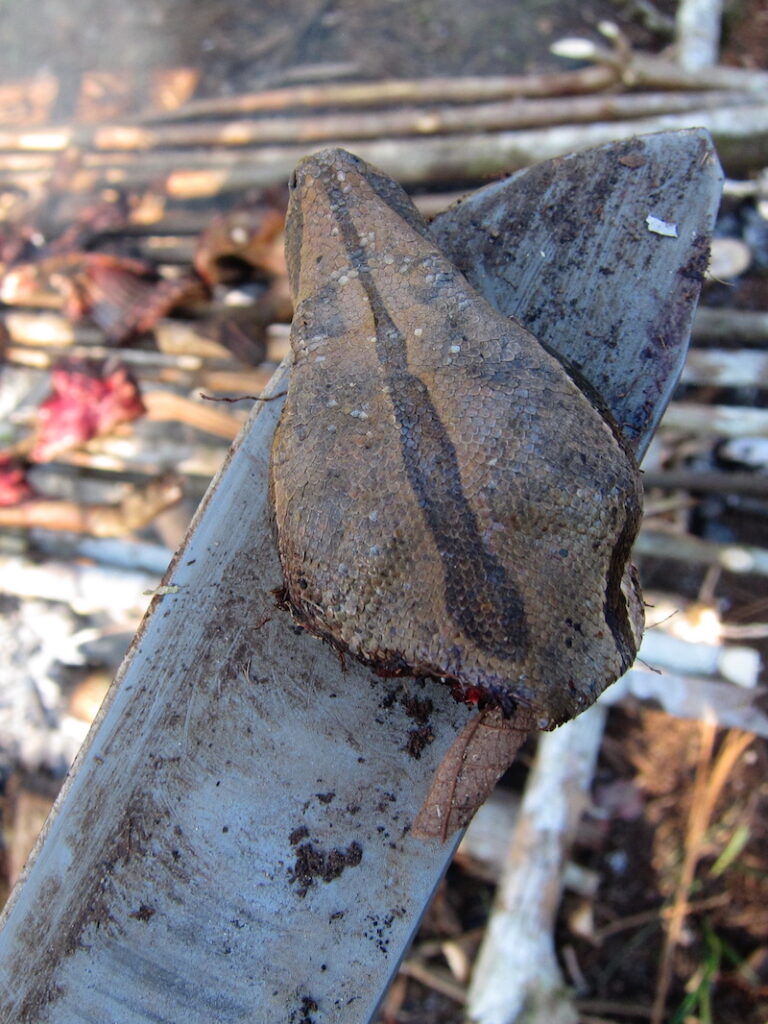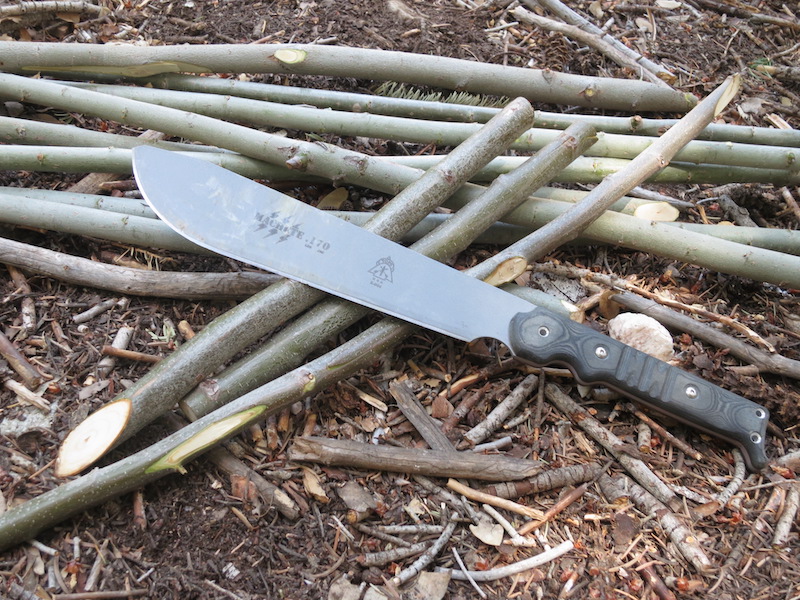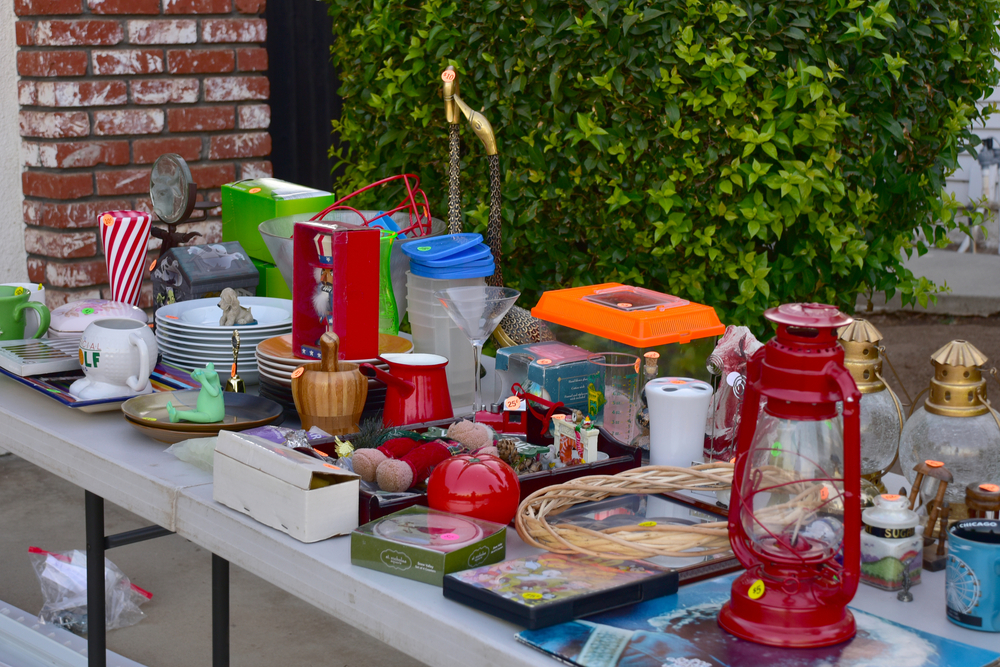TOPS First-ever Fully Ordained Machetes, Made in the USA- Tested in Green Hell!
With everything crawling and rain pounding heavily on my every thought, I could almost hear the “Welcome to the Jungle” soundtrack playing in my head. We were wading through knee-deep brown water, with the stinging itch from the previous day’s fire ants and everything unsacred as our companions. This alone was enough to let us all know we were in the jungle.
TOPS and Long Blades
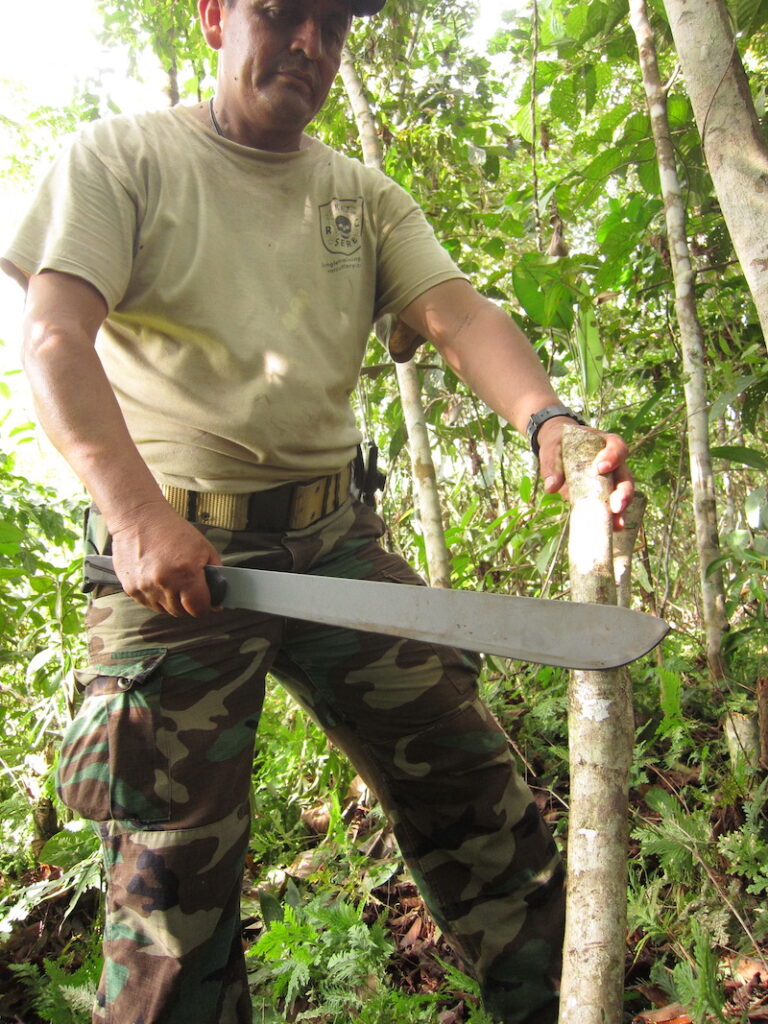
After a few years of wandering around some of this planet’s most indigenous places, two things about cutting tools have rung true to me: big blades are the common denominator in real-world bush living, and “Long Blades Rule!”
TOPS Knives has been making hard-use knives for about 25 years in the USA! I know this because it has been many years since I first learned about TOPS Knives and became friends with Mike and Helene Fuller (the founders). According to TOPS founder Mike Fuller, I was one of their first civilian customers.
If we go back several years to machetes, you may already know that the options were limited. If you were residing anywhere in North America, you had three main choices; Ontario Knives, Cold Steel, or Tramontina. TOPS Knives finally created a machete that comes ready to go. It has a sheath on top of that—somebody wake me up.
.230 At a Glance
A longtime friend of TOPS, well-known designer and writer Joe Flowers collaborated with TOPS’s own President, Leo “The Lion” Espinoza, on the design. The art of travel is deviating from the plan, but sticking with tried-and-true steel like high carbon 1095 is what TOPS has done with the TOPS .230 machete. The .230 machete blade has an ash-grey baked-on powder coating.
The regular overall length for an 18-inch-long bladed machete is roughly 23-inches. The TOPS Machete .230 measures 22 ½-inches overall. The handle length is 6 ¾-inches, which is long. With a blade length of 15 ¾-inches and a thickness of 1/8 inch, this is a machete built for chopping hardwood. The TOPS .230 can do some regular machete duties clearing brush and slicing vines as well.
The handle is rather large compared to most machetes found in Latin America. All machetes have a few inches of unsharpened steel between the handle scales and the actual cutting edge. The machete can be held here for carving, food slicing, and short, quick chopping. TOPS uses black linen micarta with an elastic shock cord integrated into the handle as a lanyard. I used it for a while, then I removed it to get back to my comfort zone and felt—free.
Very few machetes come with a sheath, and if they do, it’s one you don’t want being made of poorly sewn canvas with no retention whatsoever. The .230 machete comes standard with a ballistic nylon sheath featuring two 6-inch-long pockets.
You’re In the Jungle Baby
A machete in the jungle has to be about the most valuable thing one can have besides their shoes. A machete can do a plethora of chores fairly well. Chop firewood, cut thick water vines to hydrate, dig steps in a muddy bank, cut trails, beat back brambles, slash green branches for traps and shelter—the list goes on.
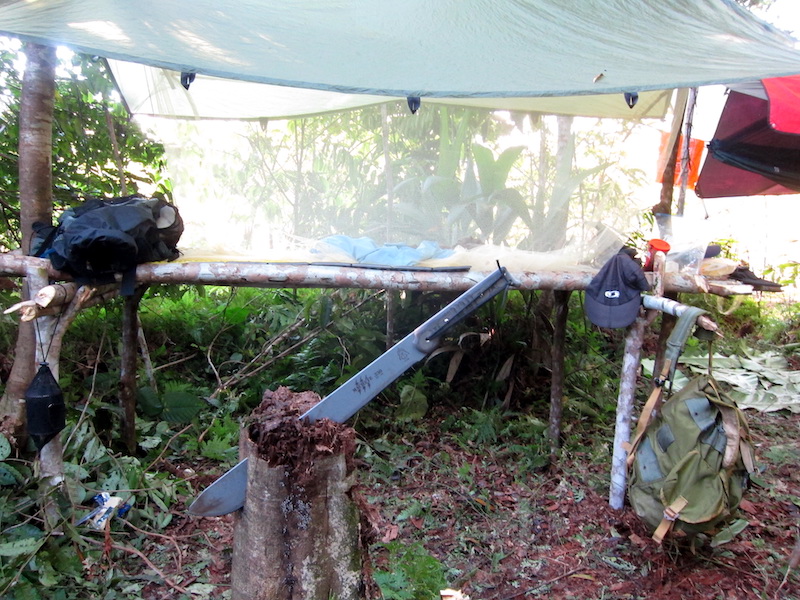
For real-world jungle use, a machete is vital! I used the TOPS .230 on a particular trip in Peru to make a swamp bed. This type of bed is a must if you don’t have a hammock in the jungle and are camping. Naturally, the ground must be cleared to start beating the crawlers back and clear a space. Several green saplings, about wrist-thickness, and four Y-joints of trees, a little thicker than a wrist, are good for this structure. The machete also chopped several palm fronds for the waterproofing needed when not using a tarp. The TOPS .230 machete hits hard like a 22-inch machete due to the extra weight (24 ounces).
Knife class and fire prep are always a chore in the jungle. I showed how to use a machete to split wood and shave it down to make feather sticks as everything was wet. The broad tip area offers prime real estate to grasp comfortably when drawing the blade upwards or down. I found sticking the blade in a log and drawing dead sticks back against the sharp edge worked well and was less cumbersome.
Other .230 Tasks
Medical evacuation is an important skill no matter where you are in the bush. Making a field-expedient litter with a machete is easier than with any other cutting tool short of a saw.
Part of a survivor’s arsenal should be signaling and self-rescue. Making a platform for a signal fire (grill style) and fire prep were all tasks requiring a machete. After all survival attempts, self-rescue is the last thing on the list. Small personal rafts were constructed using the TOPS .230 machete. The heavier machete’s weight allowed more chopping in thicker wood and less binding. MSRP: $190.00

Machete .170
After the success of the .230 machete, TOPS Knives had many requests for a smaller one. The TOPS .170 machete was born. Survivors, campers, kayakers, and explorers, now have a smaller useful companion with a 10-inch-long blade and overall length of 17.25-inches. This powerhouse weighs 15 ounces alone and 24 ounces with the sheath. In a side-by-side comparison, it’s easy to see the only difference is in the blade length and choil. The same sheath type, blade finish, and handle scales are featured on the TOPS .170. However, the blade is a tad thinner at .130-inch thick.
In the mountains of Wrightwood, California, I conducted a survival class where I used the TOPS.170 as my trap part collector. We found a water source in a small canyon and followed it until we came across willow thickets on either side of the gurgling creek. The .170 machete was perfect for lopping off several poles for making trap parts, stakes, and cooking rigs. The blade was quick and agile in hand. Often it could shear through thumb-thick to broomstick-thick pieces of willow with one swing. All handle parts were comfortable to grip when swinging and retrieving the tool from following through or when it got stuck in the wood.
Processing the willow branches was fun as I sectioned them off quickly to pass out to students. Figure four traps were one of the projects for the weekend, and I decided to use the TOPS .170 as a fixed blade knife, which it is—kind of. The length didn’t hinder any finesse needed for making notches or carving. Making stop cuts for the notches was a matter of a quick, short, controlled chop. Choking up with the choil was beneficial as any knife/machete section has the most control right above the handle. This type of notching, using a 7-notch, works for making stakes to drive into the ground. The benefit of the broad blade comes to light when hammering stakes in the ground—lots of surface area.
Fire preparation was similar to using the .230; however, more batoning with a heavy stick was done to split wood with the .170 machete. Again using the choil, there was more control when shaving wood for a fire. In California, it’s dry, and for this class, we were in the 80s Fahrenheit, so not many feather sticks were needed. I found the back of the blade, the spine, to be a good tool when knocking dry conifer twigs off from the bottom of a live tree. Pine and hemlock were abundant at about 5,500 feet. Their canopy shields light from the bottom branches, making them extra dry yet keeping them up off the forest ground. MSRP: $180.00
Sheath

Simple and robust, the ballistic nylon sheath worked adequately. The material gets heavy when wet but not nearly as bad as leather. In the states, I used the sheath on the .170 machete. However, when using the.230, I left it on the boat. In the jungle, everyone carries their machete in hand. We point the blade towards a tree and stick it in the ground enough to stay put when not in use.
Closing Arguments
In conclusion, I never sharpened the cutting edge of either machete while in use. The Rockwell hardness on the TOPS machetes was higher than machetes we acquired locally, which had to be sharpened often. Although TOPS Knives offers more big chopping blades than any company, they are thicker choppers, not machetes. The TOPS .170 and .230 machetes will thrive in North America and the tropical jungle environment. Wherever you may find yourself, be it survival or recreational adventures, rest assured, you can trust TOPS Knives!




























